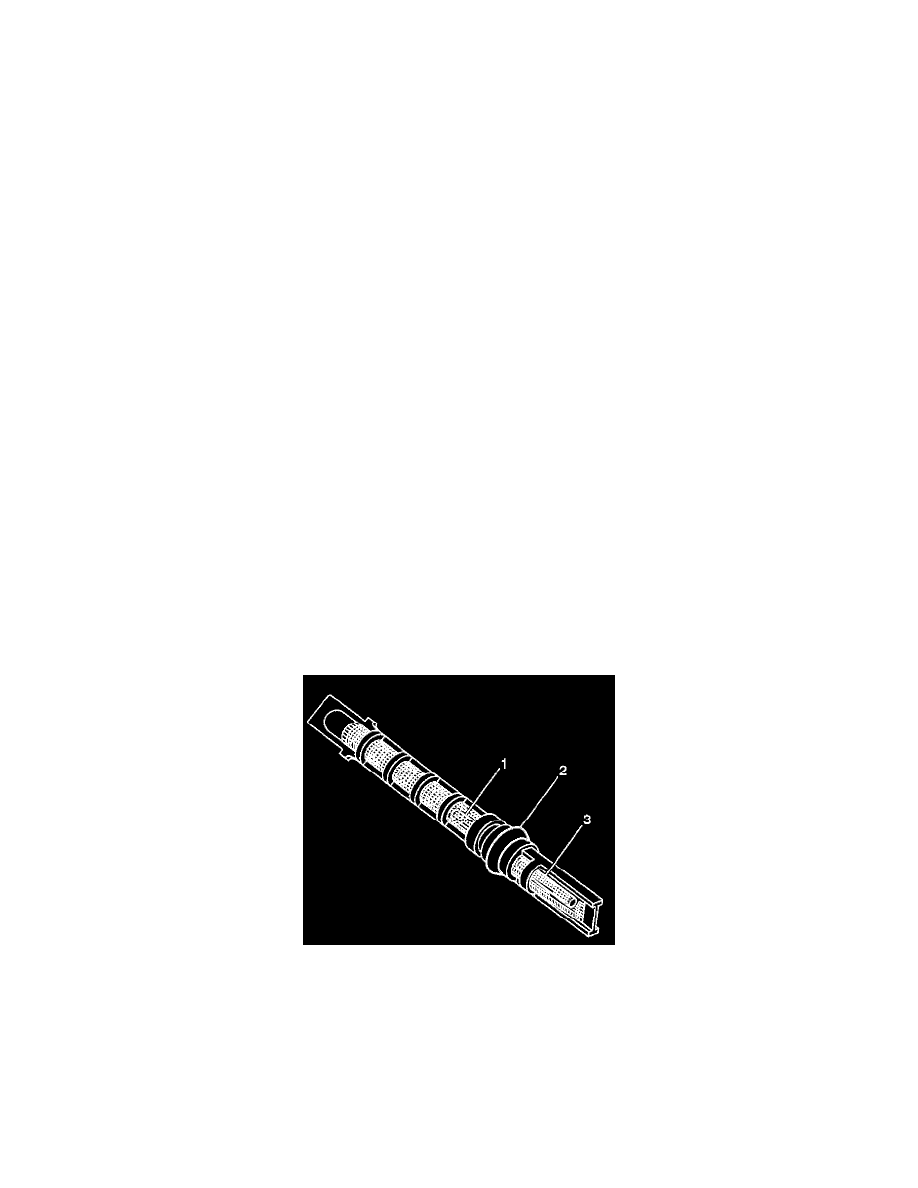K 2500 Suburban 4WD V8-5.7L VIN R (1999)

Refrigerant: Description and Operation
Accumulator
The sealed accumulator assembly connects to the evaporator outlet pipe. The sealed accumulator assembly functions as a liquid/vapor separator that
receives the following:
-
The refrigerant vapor
-
Some liquid refrigerant
-
The refrigerant oil from the evaporator
The sealed accumulator assembly only allows the refrigerant vapor and the refrigerant oil to flow to the compressor.
At the bottom of the accumulator is a desiccant that acts as a drying agent for moisture that may enter the system. An oil bleed hole, located near the
bottom of the accumulator outlet pipe, provides an oil return path to the compressor.
A low-side pressure service fitting is located on the accumulator. A similar service fitting is provided for mounting the cycling pressure switch. Do not to
discharge the system when replacing the switch. Service the accumulator only as a replacement assembly.
Compressor
The Harrison HT-6 compressor is belt-driven by the engine crankshaft through the compressor clutch pulley. The compressor pulley rotates freely,
without turning the compressor shaft, until an electromagnetic clutch coil is energized. When applied voltage energizes the clutch coil, a clutch plate and
hub assembly move rearward toward the compressor clutch pulley. The magnetic force locks the clutch plate and the compressor clutch pulley together
as one unit in order to drive the compressor shaft.
All the replacement compressors from the service parts have 240 ml (8 fl oz) of oil in the crankcase. When replacing the compressors, drain the oil from
the old compressor into an approved container. Note the amount drained. Drain the oil from the new compressor. Then, fill the new compressor with new
oil in the same amount that was drained from the old compressor.
Condenser
The condenser assembly in front of the radiator consists of coils that carry the refrigerant, and cooling fins, that provide the rapid transfer of heat. Air
passing through the condenser cools the high-pressure refrigerant vapor, causing condensation.
Evaporator
The evaporator cools and dehumidifies the air before the air enters the vehicle. High pressure liquid refrigerant flows through the orifice tube (front
system) or TXV (rear system) into the low pressure area of the evaporator. The heat in the air passing through the evaporator core is lost to the cooler
surface of the core, thereby cooling the air. When the process of heat loss from the air to the evaporator core surface takes place, any moisture in the air
condenses on the outside surface of the evaporator core. This condensed moisture drains as water.
Expansion (Orifice) Tube
The plastic expansion tube, with the mesh screen and orifice is in the condenser outlet pipe in all the models, except the models with rear air conditioning
(RPO C69). Models equipped with rear air conditioning use a Y-shaped junction block in the tube between the condenser and the front evaporator. The
junction block is near the right side of the radiator support. The expansion tube (2) is between the junction block and the front evaporator. Refer to
Expansion (Orifice) Tube Replacement - Auxiliary or HVAC Component Views. See: Expansion Block/Orifice Tube/Service and Repair
The orifice tube provides a restriction to the high-pressure liquid refrigerant in the liquid line, metering the flow of refrigerant to the evaporator as a
low-pressure liquid. The filter screens on both the inlet and outlet sides prefect the expansion tube and orifice from contamination. Service the tube only
as a replacement assembly.
When the engine is turned OFF with the air conditioning operating, the refrigerant in the system flows from the high-pressure side of the expansion tube
orifice to the low-pressure side until the pressure moves towards equalization. This is detectable as a faint hissing sound for 30-60 seconds. The hissing
